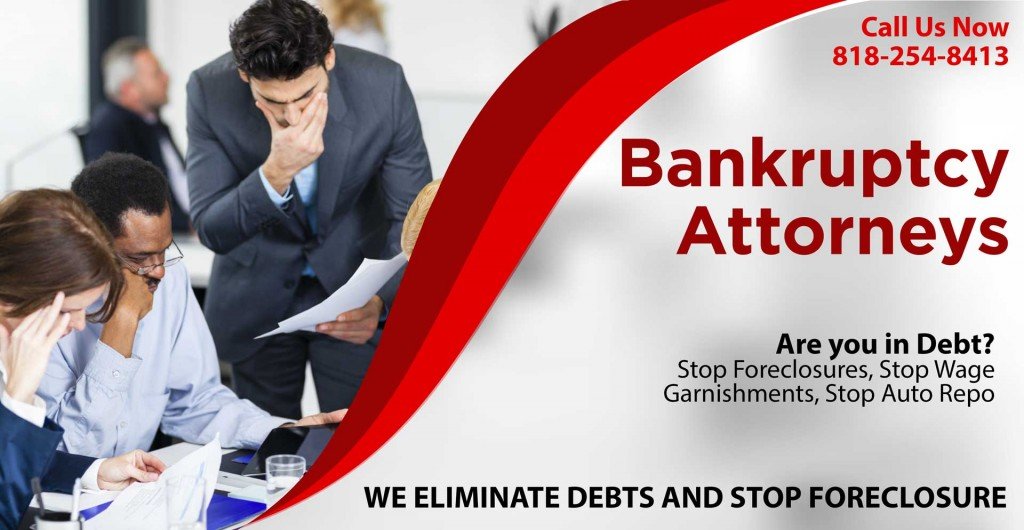
 Times are still tough for a lot of people. Every day, people face job loss, sudden illness, divorce or the death of a family member. No matter what causes personal hardship, it can be very difficult to get back on stable financial footing.
Times are still tough for a lot of people. Every day, people face job loss, sudden illness, divorce or the death of a family member. No matter what causes personal hardship, it can be very difficult to get back on stable financial footing.
Bankruptcy is a legal strategy for debt elimination. Individuals, business owners and corporations use bankruptcy to get reorganized and to stop creditors from calling. In order to get rid of debts get a fresh start, sometimes it is necessary to go through the process of bankruptcy. There is no stigma any more when it comes to seeking legal debt relief. Donald Trump filed bankruptcy four times in 1991, 1992, 2004 and 2009.
The process of filing bankruptcy is complex work and the laws are very specific about who is eligible and who is not qualified to file. Los Angeles has specific rules for income limits and the number of people in a household that can qualify for filing. A skilled attorney is capable of handling the complex work for you as well as offering advice on how the law can affect you personally. An experienced attorney usually starts by understanding your current situation and then coming up with an overall strategy for filing bankruptcy, depending on your personal goals.
The difference between Chapter 7 and 13 bankruptcies
Most people have credit card debt and never need to file Chapter 7 bankruptcy. Filing Chapter 7 bankruptcy is a strategy to get rid of credit card debt when it gets to a point that it is no longer possible to make payments to the credit card company and also cover necessities such as rent, insurance, transportation, gas and groceries. Chapter 7 bankruptcy does not usually force a person to pay back all of their debts.
Filing Chapter 13 bankruptcy is a strategy that gives a person the chance to catch up after falling behind on mortgage or car payments. Chapter 13 bankruptcy gives a person a second chance to keep their home or car[s] after falling behind on payments. Chapter 13 bankruptcy immediately stops a foreclosure or repossession if the bank is taking steps to take back the house or car[s].
Benefits and Goals of chapter 7and chapter 13 bankruptcies
Chapter 7 bankruptcy is a very effective strategy to stop collections, eliminate credit cards and medical bills, eliminate old IRS tax debt, eliminate personal loans, wipe out judgments, stop wage garnishment, and immediately stop foreclosure or car repossessions.
Chapter 13 bankruptcy is also a very effective strategy to stop collections, get rid of credit cards and medical bills, eliminate old IRS tax debt, eliminate personal loans, wipe out judgments, stop wage garnishment, and immediately stop foreclosure or car repossessions. At the same time, Chapter 13 gives a person a second chance to catch up when they have fallen behind on mortgage or car payments to keep the house or car without fear of a foreclosure or repossession.
Why it is important to find the right attorney for a Chapter 13
An experienced Los Angeles bankruptcy attorney will immediately advise you whether you can file chapter 7 or chapter 13 bankruptcy. Qualifying depends on the specific debt that you have and the income and assets that you need to protect.
A skilled bankruptcy lawyer also has the ability to handle all legal matters and represent the client at mandatory meetings before the bankruptcy trustee and the judge. It is important to find a lawyer that has a proven track record filing Chapter 13 cases, because those cases can last more than 5 years from the start to the finish. Many lawyers file Chapter 7 cases, but the Chapter 13 cases require more time and dedication.
Getting Rid of Credit Card Debts and Medical Debts
Credit card and medical debt can be eliminated by filing either chapter 7 or chapter 13 bankruptcy. Income and your ability to repay debts is the main difference between Chapter 7 and 13 filings. A person with higher/disposable income may have to file Chapter 13 bankruptcy and may have to repay a portion of any unsecured debt instead of filing Chapter 7 and eliminating all of the debt completely.
Stopping Foreclosure and Getting Rid of 2nd or 3rd Mortgages and HELOCs
When a person files Chapter 13 bankruptcy, a foreclosure is automatically stopped. In addition, a second or a third mortgage can be stripped or eliminated if the loan is not secured by any equity in the house. In simple terms, when a borrower is underwater on the first mortgage, the 2nd or 3rd can be eliminated. Chapter 7 bankruptcy only offers a temporary stay of foreclosure and there is not an option to strip any liens or repay missed mortgage payments under Chapter 7.
Get Free Legal Advice Before Filing Bankruptcy
A good bankruptcy attorney should be able to offer free legal evaluation and advice. You need to know if you qualify to file bankruptcy before you file. If you are facing serious problems such as foreclosure, wage garnishments, credit card debt over $10,000, or defending against a lawsuit you should take action today and call one of the lawyers at Consumer Action Law Group, one of the best Bankruptcy Attorney Los Angeles has to offer. Consult with an experienced lawyer who can take care of all your bankruptcy needs. The consultation is free: 818-254-8413.









